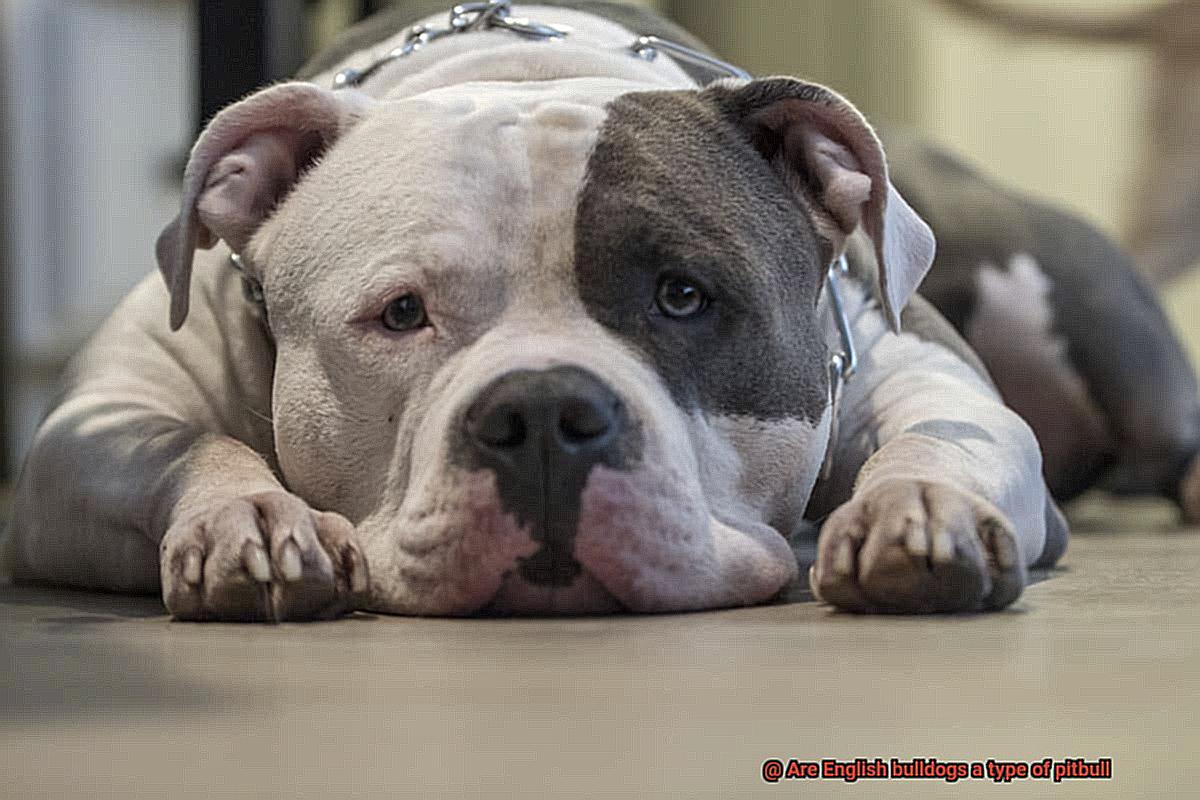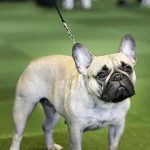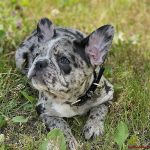Are English bulldogs a type of pitbull?
Get ready to untangle the web of confusion surrounding English bulldogs and pitbulls. These two breeds have been causing quite a stir, with people wondering if English bulldogs are just a fancy type of pitbull. Well, fear not. Today, we’re diving headfirst into this puzzling question to give you all the juicy details and set the record straight.
Picture this: you’re strolling through the park when you spot an adorable wrinkly-faced pup. Is it an English bulldog or a pitbull? It’s easy to see why these cuties get mixed up. But here’s the scoop – while they may share some family ties and hail from England, these furry friends are far from being twins.
Join us on this wild ride as we explore every nook and cranny of the English bulldog world. We’ll uncover their unique traits, dig into their fascinating history, and even tackle their relationship with pitbulls. By the end of this blog post, you’ll be armed with all the knowledge you need to answer that burning question: are English bulldogs a type of pitbull? Let’s jump in and find out together.
Origins and History of English Bulldogs
Contents
- 1 Origins and History of English Bulldogs
- 2 Origins and History of Pitbulls
- 3 Physical Characteristics: Comparing the Two Breeds
- 4 Temperament and Personality Differences
- 5 Breed Standards and Recognition for Both Breeds
- 6 The Genetic Relationship Between English Bulldogs and Pitbulls
- 7 Health Considerations for Each Breed
- 8 Training Tips for Both Breeds
- 9 Conclusion
Have you ever wondered if English Bulldogs are a type of pitbull? Well, you’re not alone. Many people get confused between these two breeds due to their similar appearance. In this blog post, we’ll dive deep into the origins and characteristics of both breeds to clear up any confusion and help you understand the differences between English Bulldogs and Pitbulls.
Origins and History:
Let’s start by exploring the origins and history of English Bulldogs. These adorable pups have their roots in England, where they were originally bred for bull-baiting. Yes, you heard it right – bulldogs used to take on bulls in a fierce battle of strength and endurance. Thankfully, bull-baiting was banned, and breeders shifted their focus to developing these dogs as loyal companions.
Origins and History of Pitbulls:
Now, let’s turn our attention to pitbulls. Contrary to popular belief, pitbulls are not a specific breed but a term that encompasses several breeds, including American Pit Bull Terriers and Staffordshire Bull Terriers. Pitbulls originated in the United States through crossbreeding bulldogs with various terrier breeds. They were initially used for bull-baiting and later became farm dogs and family companions.
Physical Characteristics:
When it comes to physical characteristics, both English Bulldogs and pitbulls share some similarities. They both have a medium-sized body, short coat, and muscular build. However, there are notable differences too. English Bulldogs have a stocky build, a wide head with a wrinkled face, and a short muzzle. On the other hand, pitbulls have a more athletic appearance with a broad chest and powerful jaws.
Temperament and Personality:
In terms of temperament, English Bulldogs are known for their gentle and loving nature. They are loyal, affectionate, and make great family pets. Pitbulls, on the other hand, have a reputation for being energetic, intelligent, and protective. Proper training and socialization play a significant role in shaping their behavior, just like any other breed.
Breed Standards and Recognition:
To further differentiate between the two breeds, let’s look at breed standards and recognition. English Bulldogs have a defined breed standard set by kennel clubs like the American Kennel Club (AKC). They belong to the Non-Sporting group and have specific criteria for appearance, temperament, and overall conformation. Pitbulls, as a term encompassing different breeds, also have recognized breed standards depending on the specific breed.
Origins and History of Pitbulls
Today, we’re diving into the fascinating world of pitbulls, those strong and spirited canines that have captured the hearts of many. But first, let’s clear up a common misconception: English Bulldogs are not pitbulls. They may share some similarities, but they are distinct breeds with their own unique characteristics.

So, where did pitbulls come from? Well, let’s take a trip back in time to 19th century England. Picture this: bull-baiting, a popular form of entertainment that involved dogs grappling with bulls. Sounds intense, right? Well, that’s exactly what pitbulls were initially bred for. Their ancestors were English Bulldogs crossed with terriers to create a more agile and aggressive breed suitable for this brutal sport.
But hold on tight because the story doesn’t end there. These scrappy fighters made their way across the pond to America, where they found new roles as working dogs on farms. They herded livestock, guarded property, and even hunted game. Talk about a versatile bunch.
Now, here’s where things get interesting. In the early 20th century, pitbulls gained a reputation for their loyalty and affection towards humans. They were often called “nanny dogs” because of their gentle nature with children. Isn’t that just heartwarming? These tough-looking dogs turned out to be big softies at heart.
But wait, what exactly is a pitbull? Contrary to popular belief, “pitbull” isn’t a specific breed. It’s actually a term used to describe several different breeds that share similar physical and behavioral traits. We’re talking about the American Pit Bull Terrier, American Staffordshire Terrier, Staffordshire Bull Terrier, and Bull Terrier.
Let’s not forget about our lovable English Bulldogs. While they played a role in the development of pitbulls, they stand on their own as a distinct breed. With their stocky build, wrinkled face, and friendly demeanor, English Bulldogs have become popular companion animals. They were originally bred for bull-baiting, but their affectionate nature has won over many hearts.
Now, back to our pitbull pals. These muscular powerhouses are known for their strong jaws and high energy levels. They require experienced owners who can provide them with proper training and socialization. Like any dog breed, their behavior is influenced by their upbringing and training. Responsible ownership is key to raising a well-behaved and happy pitbull.
Physical Characteristics: Comparing the Two Breeds
When it comes to physical characteristics, English Bulldogs and Pitbulls may share some similarities, but they also have their own distinct features that set them apart. French Bulldog enthusiasts, buckle up and get ready for a deep dive into the world of these two fascinating breeds.
Muscular Build and Broad Chests
Both English Bulldogs and Pitbulls are known for their muscular build and broad chests. They have strong, powerful bodies that exude strength and athleticism. These breeds are no strangers to physical activities and can often be seen showcasing their agility and endurance.
Short Coats in Various Colors and Patterns
English Bulldogs and Pitbulls both sport a short coat that is low-maintenance and easy to care for. They come in a wide range of colors and patterns, including brindle, fawn, white, black, and more. However, it’s important to note that there may be slight variations in the specific coat types between the two breeds.
Size Matters
In terms of size, there’s quite a noticeable difference between English Bulldogs and Pitbulls. English Bulldogs are typically shorter and heavier, with a stocky build that gives them a compact appearance. On the other hand, Pitbulls are more lean and agile, with a height that tends to be taller than that of English Bulldogs.
Head Shape: Wrinkles vs Elongated Snout
One of the most distinct differences between these breeds lies in their head shape. English Bulldogs have a more pronounced wrinkled face, giving them an adorable and unique look. Their muzzle is shorter compared to Pitbulls, which often have a more elongated snout.
Ears: Roses vs Triangles
When it comes to ears, English Bulldogs often have small rose-shaped ears that sit high on their heads. In contrast, Pitbulls tend to have larger, more triangular-shaped ears that stand upright. These differences in ear shape contribute to the overall appearance of each breed.
Tails: Short and Screwed vs Docked
English Bulldogs are known for their naturally short and screw-shaped tails. It’s a defining feature that sets them apart from many other breeds. On the other hand, Pitbulls may have a longer tail, although it is not uncommon for their tails to be docked for certain purposes.
Other Notable Differences
While we’ve covered some key differences in physical characteristics, there are other notable distinctions between English Bulldogs and Pitbulls. These may include variations in eye shape or overall body structure, which can further differentiate the two breeds.
Temperament and Personality Differences
These two breeds may share some physical similarities, but when it comes to temperament and personality, they couldn’t be more different.
In this article, we’ll explore the distinct traits that make these breeds unique, providing valuable insights for potential owners and enthusiasts alike.
English Bulldogs: The Gentle Giants
English Bulldogs are renowned for their calm and friendly demeanor. Here are some key characteristics of their temperament and personality:
- Docile and Gentle: English Bulldogs are typically laid-back and easygoing. They have a natural affinity for people and are known to be gentle and loving towards their owners and family members.
- Good-Natured: These lovable dogs have an inherently good-natured disposition, making them excellent companions for families with children or elderly individuals.
- Patient: English Bulldogs are known for their patience, which is a valuable trait in households with young children or other pets.
Pitbulls: The Energetic Athletes
Pitbulls, on the other hand, possess a more energetic and active temperament. Here’s what sets them apart:
- Intelligent and Agile: Pitbulls are highly intelligent dogs with a keen sense of agility. They excel in various activities such as obedience training, agility trials, and even search and rescue work.
- Loyal and Protective: Known for their loyalty, Pitbulls are fiercely protective of their families. They have a strong drive to please their owners and can form deep bonds with their human companions.
- Courageous: Pitbulls have an innate courage that makes them excellent watchdogs. Their protective nature ensures that they will do whatever it takes to keep their loved ones safe.
Exercise Needs:
When it comes to exercise requirements, these breeds differ significantly:
- English Bulldogs: These dogs are generally less energetic compared to Pitbulls. They enjoy moderate exercise, such as leisurely walks or playtime in the backyard.
- Pitbulls: With their high energy levels, Pitbulls require more physical activity and mental stimulation to prevent boredom and destructive behavior. Regular exercise, including vigorous play sessions or runs, is essential for their well-being.
It’s important to note that individual temperament and personality can vary within each breed. Factors such as genetics, upbringing, socialization, and training all play a significant role in shaping a dog’s behavior.
Breed Standards and Recognition for Both Breeds
In this article, we’ll explore the breed standards and recognition for English Bulldogs and Pitbulls. By understanding the characteristics and recognition of these breeds, you can gain a deeper appreciation for your own French Bulldog.
English Bulldogs – A Distinctive Appearance:
English Bulldogs are known for their unique appearance. According to the American Kennel Club (AKC), an English Bulldog should have a well-developed head with a broad skull, deep-set eyes, and a short, broad muzzle. Their stocky build and wrinkled face add to their charm. The AKC emphasizes that the breed should have a friendly and docile temperament.
Pitbulls – A Category with Diverse Recognition:
Pitbulls are not a specific breed but rather a category that includes several breeds like American Pit Bull Terriers, Staffordshire Bull Terriers, and American Staffordshire Terriers. Recognition and breed standards for Pitbulls can vary depending on the kennel club or organization.
For example, the United Kennel Club (UKC) recognizes the American Pit Bull Terrier as its own breed. According to the UKC standard, Pitbulls should have a medium-sized body with strong muscles and a broad head. They should also be agile and powerful with a friendly and outgoing temperament.
Controversies Surrounding Pitbulls:
It’s important to note that there is some controversy surrounding Pitbulls. While some kennel clubs recognize them as individual breeds, others do not. There are also debates about their temperament and whether they are inherently aggressive.
The Genetic Relationship Between English Bulldogs and Pitbulls
Have you ever wondered about the genetic connection between English Bulldogs and Pitbulls? Well, get ready to have your mind blown, because these two breeds may have more in common than meets the eye. In this section, we will explore the fascinating genetic relationship between these breeds, so grab a cup of tea, sit back, and let’s dive in.
English Bulldogs and Pitbulls may come from different breed backgrounds, but they share a common history as fighting dogs. English Bulldogs were originally used for bull-baiting, while Pitbulls were bred for bull-baiting and later for dogfighting. Despite their shared origins, these breeds have distinct genetic lineages that set them apart.
Genetic Lineage
English Bulldogs have a mixed ancestry that includes Mastiffs and Terriers. This mix gives them their unique physical traits like their stocky build, wrinkled face, and pushed-in nose. On the other hand, Pitbulls have a mix of Terriers and Bulldogs in their lineage. This combination contributes to their muscular build and strong jaws.
Physical Characteristics
When it comes to physical characteristics, English Bulldogs and Pitbulls do share some similarities. Both breeds have muscular bodies and powerful jaws. However, English Bulldogs are generally smaller in size compared to Pitbulls. Additionally, English Bulldogs have a more distinctive appearance with their wrinkled skin and pushed-in nose.
Temperament Differences
Temperament-wise, English Bulldogs are known for being docile and friendly companions. They are great family pets who love nothing more than cuddling up on the couch with their humans. On the other hand, Pitbulls tend to be more energetic and assertive due to their working background. Proper training and socialization are key to help them become well-rounded companions.
Appreciating the Unique Qualities
It is important to understand that breed traits can vary within individuals, so not all English Bulldogs or Pitbulls will exhibit the same behaviors or characteristics. Each dog is an individual with its own personality. It’s crucial to appreciate and respect the unique qualities of each breed rather than trying to classify them as the same type.
So, dear readers, as you snuggle up with your French Bulldog, remember that while English Bulldogs and Pitbulls may have a shared history and some genetic similarities, they are distinct breeds with their own unique traits. Embrace the diversity in the dog world and love your furry friends for who they are.
Health Considerations for Each Breed
English Bulldogs and Pitbulls are two popular dog breeds, each with their own set of health considerations that owners should be aware of. While they may have some similarities, it is important to understand the specific health needs of each breed to ensure their well-being. Here are some key health considerations for English Bulldogs and Pitbulls:
English Bulldogs:
- Brachycephalic Syndrome: English Bulldogs have a short muzzle and narrowed airways, which can lead to breathing difficulties. It is important to keep them in a cool and comfortable environment, especially during hot weather or exercise.
- Skin Infections: The folds and wrinkles on an English Bulldog’s face and body can trap moisture and bacteria, leading to skin infections. Regular cleaning and drying of these areas is essential to prevent such issues.
- Genetic Conditions: English Bulldogs are prone to genetic conditions such as hip dysplasia, which affects the hip joints and can cause pain and mobility issues. Regular vet check-ups, appropriate exercise, and a balanced diet can help manage this condition.

Pitbulls:
- Hip Dysplasia: Just like English Bulldogs, Pitbulls are also prone to hip dysplasia. Regular exercise, a balanced diet, and regular vet check-ups are important to maintain good joint health.
- Allergies: Pitbulls have a tendency towards allergies, particularly food allergies. Owners should be cautious about the ingredients in their dog’s food and monitor for any signs of allergic reactions.
- Skin Conditions: Pitbulls are prone to skin conditions such as dermatitis and mange. Regular grooming, including bathing and brushing, can help prevent these issues. Keeping their living environment clean is also important to minimize exposure to allergens or parasites.
Both Breeds:
Obesity: Both English Bulldogs and Pitbulls can be prone to obesity if not properly managed. Maintaining a healthy weight through a balanced diet and regular exercise is crucial to prevent obesity-related health issues.
Training Tips for Both Breeds
Training is essential for both English Bulldogs and Pitbulls as they are strong-willed breeds with unique characteristics. In this article, we will explore effective training tips that apply to both breeds, focusing on socialization, positive reinforcement techniques, and establishing boundaries.
Start Early and Be Consistent:
Begin training your English Bulldog or Pitbull from a young age to establish good habits early on. Start with basic commands such as sit, stay, and come, gradually progressing to more advanced commands. Consistency is key – set clear rules and boundaries, and stick to them. Dogs thrive on routine and structure.
Socialization is Key:
Expose your dog to different people, animals, and environments to ensure they become well-rounded and confident adults. Arrange playdates with other friendly dogs, take them to dog parks, and introduce them to various sights and sounds. This will help prevent fear-based aggression and anxiety.
Positive Reinforcement:
Both breeds respond well to positive reinforcement methods. Reward good behavior with treats, praise, or playtime. This motivates them to repeat desirable actions while strengthening the bond between you and your dog. Avoid punishment or harsh training techniques as they can cause fear or aggression.
Be Patient and Understanding:
English Bulldogs and Pitbulls can be sensitive dogs, so it’s important to be patient during training sessions. Give them time to learn and adjust to new commands or situations. If there are any behavior issues, use positive reinforcement techniques to redirect their attention or reward appropriate behavior.
Seek Professional Guidance:
Consider enrolling your dog in obedience classes or working with a professional trainer. They can provide additional guidance and support in training your dog effectively. Their expertise will help address specific challenges you may encounter during the training process.
Ongoing Training:
Remember that training is an ongoing process throughout your dog’s life. Continue to reinforce good behavior and work on any areas that need improvement. Regularly engage in mental stimulation activities and exercise to keep your dog healthy and happy.
XCfO6vFVs9s” >
Conclusion
In conclusion, English bulldogs are not a type of pitbull.
While both breeds share some similarities, such as their muscular build and history in bull-baiting, they are distinct and separate breeds with their own unique characteristics. English bulldogs are known for their distinctive wrinkled face, stocky body, and gentle temperament.
It is essential to recognize and appreciate the differences between these two breeds to avoid any misconceptions or mislabeling.




